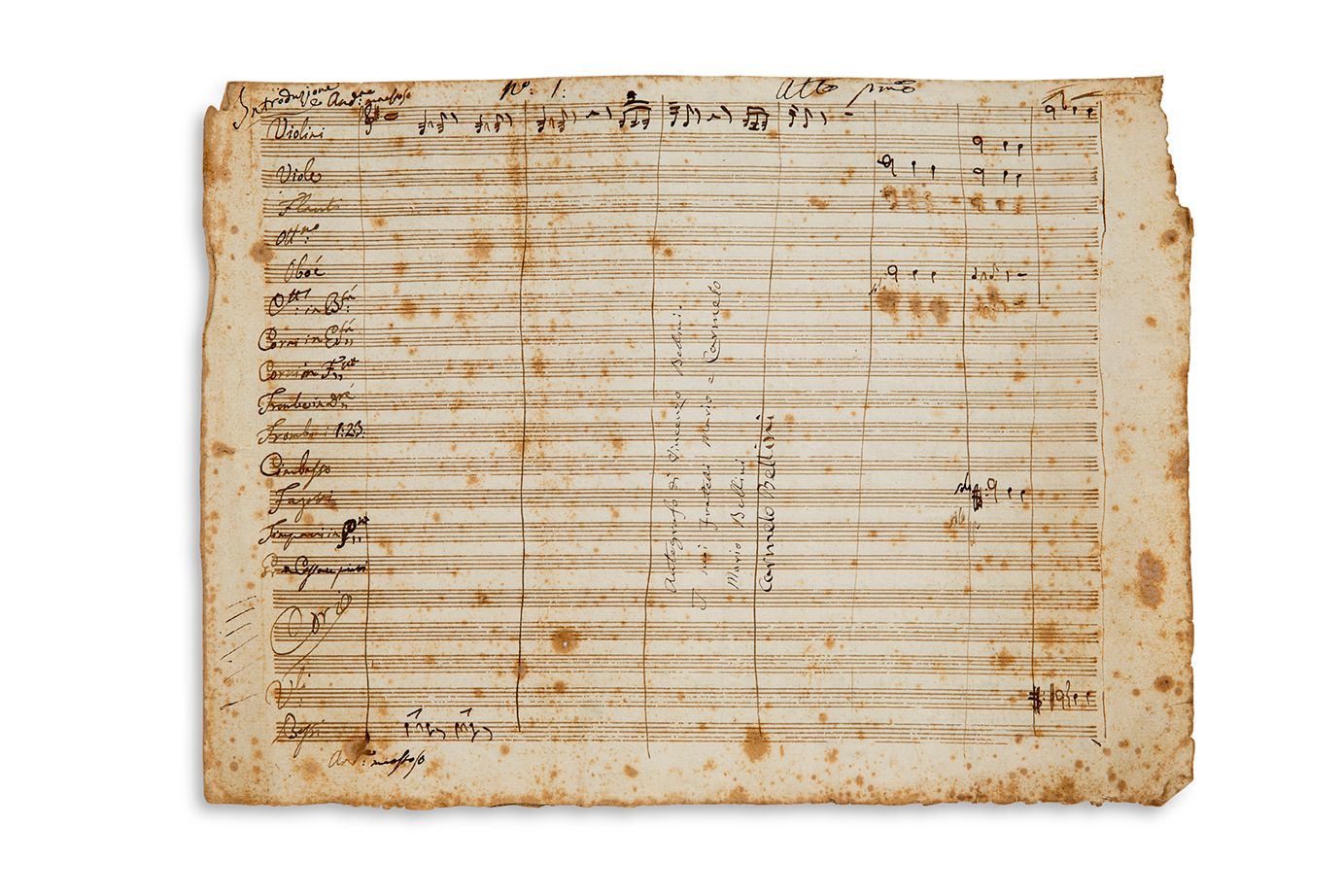Description
BELLINI Vincenzo (1801-1835)
AUTOGRAPHIC MUSICAL MANUSCRIT, Introduzione; 2 oblong pages in-fol. (23.5 x 32 cm, some foxing). 13-bar orchestral introduction before an opening chorus in the first act of an opera, unidentified; in G major in 4/4, Andante maestoso. The manuscript is notated in brown ink on 20-stave oblong paper. Although Bellini wrote the names of all the instruments in his orchestra in Italian in the margin of the frame, only violins I and II, violas, oboes, solo bassoon, cellos and double basses are included here; the flute has been scratched out. This sheet has been certified and signed on the first page by the composer's two brothers, Mario and Carmelo Bellini. The manuscripts of Bellini, who died at the age of 34, are extremely rare.
You may also like
